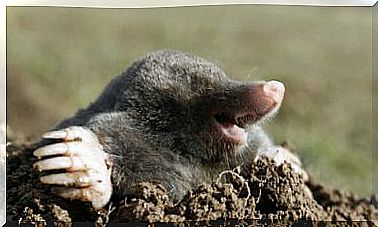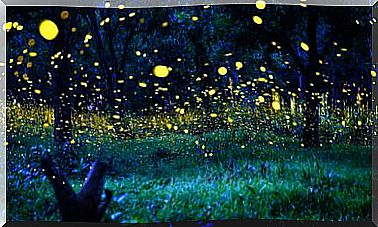The Saiga Antelope, A Species With A Challenging Existence

The saiga antelope is a curious animal that has suffered incalculable losses in recent years. Scientists around the world are working tirelessly to prevent this species from becoming completely extinct.
Saiga antelopes are migratory animals that inhabit Central Asia, in its plains and semiarid areas. Throughout the year, saiga migrate through Kazakhstan, Mongolia, southern Russia, Turkmenistan and Uzbekistan.
In general, these animals move about a thousand kilometers a year. The migrations of the saiga antelopes are generally from north to south and vice versa. However, several scientists have reported erratic and nomadic movements from time to time.
Perhaps the most representative feature of this type of antelope is its protruding nose. This nose is a vestige of your evolutionary process. Your olfactory organ has evolved to act like an air filter.
The saiga antelope’s nose is large and flexible, with a complex multipurpose internal structure. During migrations, the nose filters the air to prevent the dust and dirt raised by your gallop from entering the lungs. During the winter, it heats the air before it reaches the lungs, thus allowing the animal to maintain a stable body temperature.
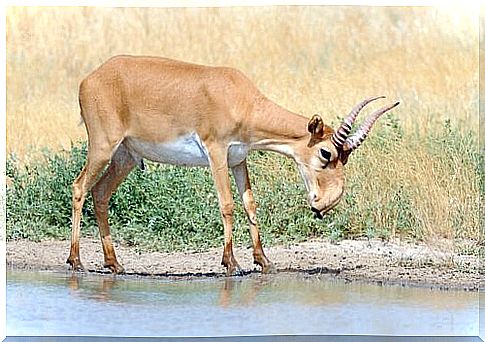
When spring comes, the female saiga antelope migrate to the mating areas. These areas have been the same for tens of years, vast meadows with tall grass.
Unfortunately, the saiga antelope is seriously threatened by poaching. Saiga horns are sold at a very high price on the black market. In China, saiga antelope horns are considered elements of high traditional value.
On the saiga antelope mass killings
For the concern of different wildlife conservation groups, poaching is not the only threat to the saiga antelope. There is a silent enemy who, over the years, has managed to exterminate more than 90% of the total antelope population.
In 2015, around 200,000 saigas died suddenly within a few days. Researchers were horrified by this phenomenon, as thousands of specimens collapsed for no apparent reason across the grasslands of Kazakhstan.
The saiga antelopes were gathered in their usual mating places when the catastrophe struck. Several experts – veterinarians, zoologists and ecologists among them – admitted that they had never witnessed anything like it.
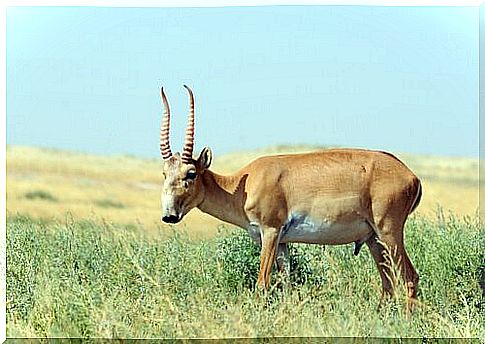
After several tests, it was discovered that the cause of the deaths was a serious infection in the bloodstream caused by bacteria. This infection caused severe internal bleeding in the animals, leading to sepsis.
In this sense, recent studies have found that the proliferation of lethal bacteria was caused by the climate at the time: too humid and too hot. After studying the historical evidence from previous research on antelopes, a surprising conclusion was reached.
The 2015 catastrophe was not the only one involving mass deaths suffered by the saiga antelopes. Periodically, this species has suffered sudden deaths from most of its population.
After reviewing the historical evidence, experts deduced that every time the deaths occurred, the weather had similar conditions. But how is hot and humid climate related to the spread of disease?
Global Warming, Migration and Infectious Diseases
Global warming has been a phenomenon that has worried governments and individuals around the world for years. However, it doesn’t just affect humans.
In fact, the accelerated climate change that has occurred due to human industrialization has had serious consequences for flora and fauna worldwide. Due to global warming, a large number of species have had to migrate to climates better suited to their survival.
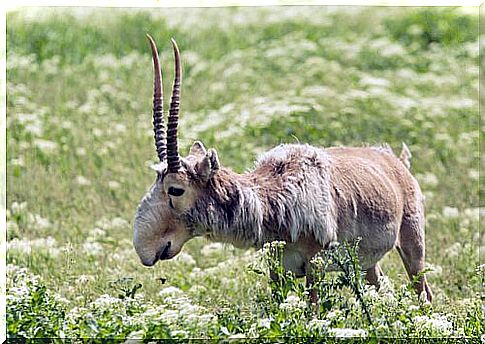
Thus, fauna and flora are reacting to high temperatures and migrating to colder climates. This implies that many disease-carrying insects also migrate.
As temperatures rise and weather patterns change, the rainy seasons also change. Thus, pests associated with rain in tropical areas – such as mosquitoes, for example – are multiplying as never before.
Scientists have long known that warm climates are the ideal medium for disease to spread. Bacteria multiply much more quickly in hot climates and humid environments.
In the case of the saiga antelope, the bacteria responsible for the mass deaths is always present in its nostrils. However, it was the increase in temperature that caused the uncontrolled proliferation of bacteria within the saigas’ body.
If we want the saiga antelope to be preserved, we must try to limit our production of gases that are harmful to the environment. As with many other species, the survival of saigas will depend on how well we care for the environment.


